5 Best Grass Seeds for Colorado
BY CECILIA ACEVEDO | MAY 22ND, 2023 | COLORADO, LAWN CAREColorado’s grass faces a tough challenge due to its climate. Between the cold winters and dry, hot summers, the extreme temperature shifts can cause your lawn to look withered and brown. Planting the right grass seeds is essential to ensure a resilient and lush-looking landscape. Here you will find the 5 best grass seeds for Colorado and helpful tips to maintain a great-looking lawn throughout the year.
- Warm-Season vs. Cool-Season Grasses
- Best Cool-Season Grasses for Colorado
- Best Warm-Season Grass for Colorado
- FAQ About Colorado Grass Seeds
- Choose Plant and Grass Varieties for Your Colorado Landscape
Warm-Season vs. Cool-Season Grasses
Cool-season grasses and warm-season grasses are two broad categories of grasses adapted to different climate conditions.
Cool-season grasses grow best in regions with cooler temperatures and moderate rainfall. Typically, they are planted during autumn or the beginning of spring when the ground is moist and cold. These grasses stay green throughout the fall and spring but tend to go dormant and turn brown during hot and dry summer months and extreme winters.
On the other hand, warm-seasons thrive in regions with hot summers and mild winters. They are planted in late spring or early summer when the soil is moist and warm and stay green throughout summer. These types of grasses go dormant and turn brown in the fall and winter when temperatures drop.
Overall, the main difference between cool-season and warm-season grasses lies in their adaptation to temperature and moisture conditions and their growth patterns throughout the year.
Best Cool-Season Grasses for Colorado
Colorado’s common cool-season grasses include tall fescues, Kentucky bluegrass, perennial ryegrass, tall fescue, and fine fescue. Keep on reading to know more about them.
1. Kentucky Bluegrass
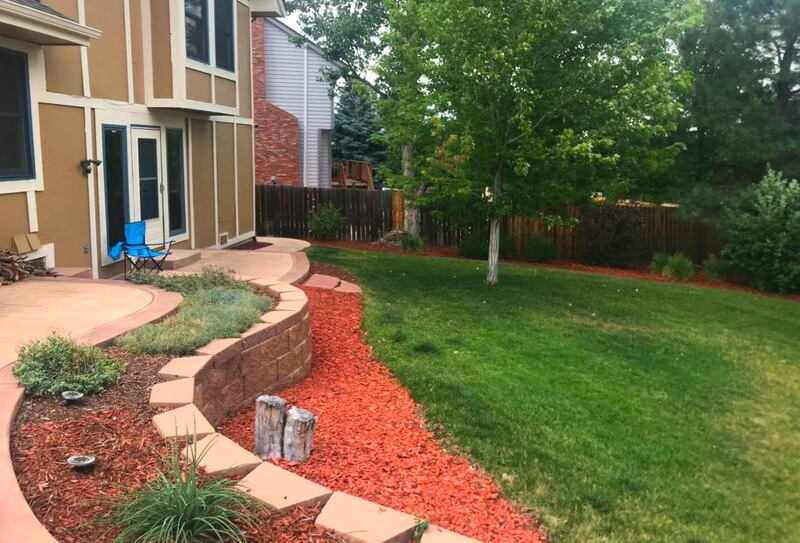
Photo Credit: Brenda Ryan / Wikilawn
Kentucky bluegrass is a great grass option for a Colorado yard. It has a high-quality appearance that adds beauty and value to any property. However, it may require frequent irrigation to maintain its health and vibrancy. While it is prone to thatch formation and some diseases and insects, Kentucky bluegrass is incredibly cold tolerant, making it ideal for the harsh winters in Colorado.
It spreads by rhizomes, which allows it to repair itself, making it a durable option for high-traffic areas. Although it can tolerate drought, it may turn brown during hot, dry summers, and it requires frequent mowing to keep it at a healthy height. Overall, Kentucky bluegrass is an excellent grass choice for a Colorado yard due to its appearance, cold tolerance, and self-repairing abilities.
Classification: Cool-season grass
Spreads by: Rhizomes
Shade tolerance: Low
Drought tolerance: Moderate
Foot traffic tolerance: Moderate
Maintenance needs: Moderate mowing frequency and high fertilization needs.
Mowing height: Set mowing height between 2.5 and 3.5 inches.
Potential for disease: Moderate to high; prone to several diseases, such as dollar spot, leaf spot, necrotic ring spot, summer patch, and stripe smut.
Soil pH: 6-7.5
Soil type: Performs best in well-drained, heavy soils with high fertility.
Other notes: It has a higher tolerance for close, frequent grazing than other grasses and forms a dense sod.
2. Perennial Ryegrass
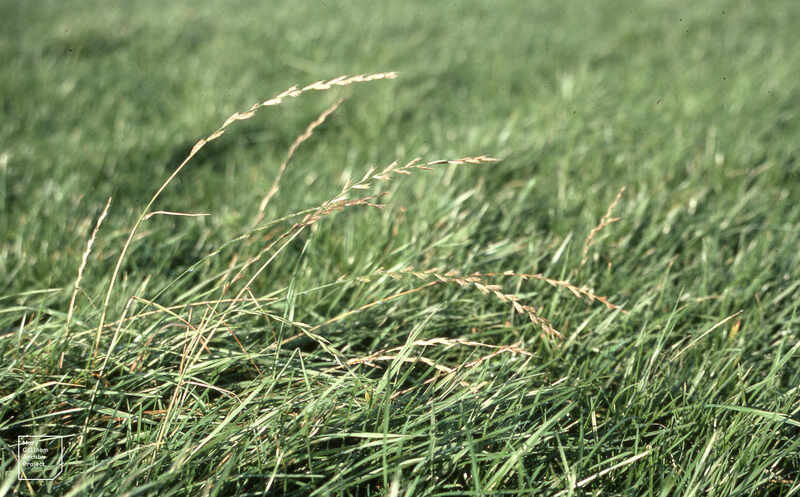
Photo Credit: Dr Mary Gillham Archive Project / Flickr / CC BY 2.0
Perennial ryegrass is a fantastic option for homeowners looking to add a touch of beauty to their Colorado yards. This grass species boasts a gorgeous dark hue that enhances the beauty of any backyard. One of the best features of perennial ryegrass is its quick establishment, making it an ideal choice for homeowners looking for a fast and easy solution.
Additionally, it doesn’t thatch easily and is highly resistant to harsh soil conditions, making it an incredibly low-maintenance option. Perennial ryegrass has rapid growth and a high tolerance for foot traffic, which is perfect for families with active children or pets.
It can even handle partial shade, making it a versatile option for different areas of your yard. However, it’s important to note that perennial ryegrass requires significant water usage and doesn’t tolerate drought well. But with the proper care and attention, this beautiful grass species will thrive in your Colorado yard and leave you with a stunning landscape to enjoy.
Classification: Cool-season grass
Spreads by: Has a bunch-type growth habit
Shade tolerance: Low
Drought tolerance: Low
Foot traffic tolerance: High
Maintenance needs: Moderate mowing and fertilization requirements. Thatch is not significant.
Mowing height: Set mowing height to 1.5 to 2.5 inches
Potential for disease: High. Common diseases include gray leaf spots, red thread, and leaf spot/melting-out.
Soil pH: Can grow in soils with a pH between 5 and 8 but prefers between 6 and 7.
Soil type: Prefers good drainage and fertility but can tolerate some poor drainage.
Other notes: For a more durable and disease-resistant turf, mixing it with Kentucky bluegrass is common.
3. Fine Fescue
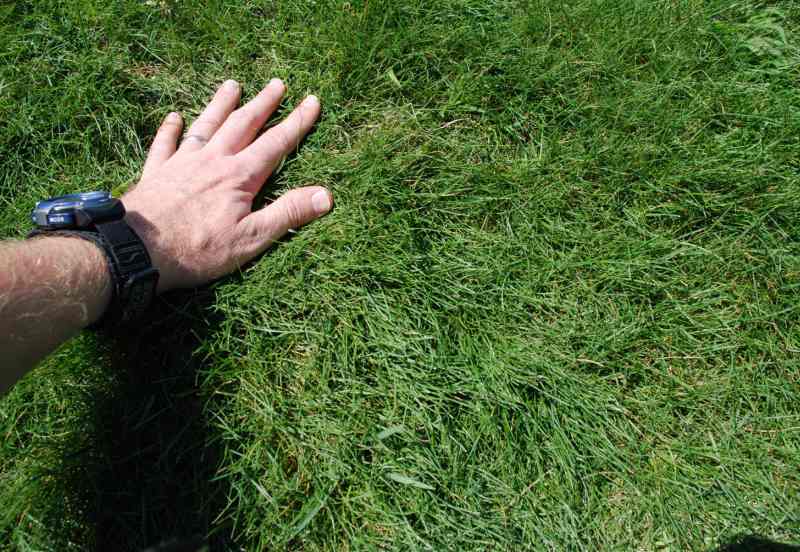
Photo Credit: Aaron Patton / Purdue’s Turfgrass Science Program
Fine fescue is an excellent choice for a Colorado yard for various reasons. Firstly, it is incredibly drought-resistant, a valuable trait in an arid climate like Colorado’s. Additionally, fine fescue is a low-maintenance grass species that requires less frequent mowing and fertilizing, making it an eco-friendly option that saves you time and money.
However, it’s worth noting that fine fescue isn’t very heat-tolerant. Additionally, it’s not ideal for high-traffic areas. But if you’re looking for a low-maintenance, shade-tolerant, and drought-resistant grass species that adds beauty to your yard, fine fescue is a fantastic option to consider.
Classification: Cool-season grass
Spreads by: Creeping red Fescue spreads by rhizomes, while other fine fescues are bunch-type grasses, such as chewing, hard, and sheep fescues.
Shade tolerance: Moderate to High, depending on species
Drought tolerance: Moderate to High, depending on species
Foot traffic tolerance: Low to Moderate, depending on species
Maintenance needs: Low fertilizer and mowing needs.
Mowing height: Set mowing height between 2.5 and 4.0 inches, depending on species.
Potential for disease: Moderate. Common diseases include red thread, leaf spot, dollar spot, summer patch, and powdery mildew.
Soil pH: 6-6.5
Soil type: Will not perform well in wet soil conditions. It prefers drier soils and tolerates a wide range of soil types and fertility.
Other notes: To create a lush and visually appealing lawn that can tolerate both shade and drought, fine fescue grasses are commonly mixed with other cool-season grasses like Kentucky bluegrass or perennial ryegrass. This combination results in a dense, attractive lawn that is durable and resistant to challenging weather conditions.
4. Tall Fescue
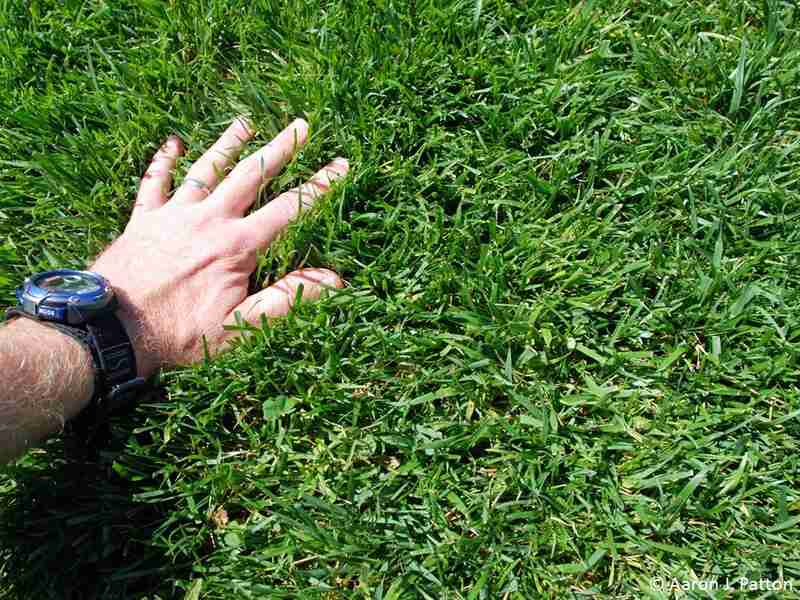
Photo Credit: Aaron Patton / Purdue’s Turfgrass Science Program
When it comes to finding the perfect grass for a Colorado yard, tall fescue is definitely worth considering. This hardy grass species has an impressive root system that can reach down two or three feet, making it incredibly heat- and drought-resistant. Tall fescue establishes and germinates quickly, so you won’t wait long to see your lawn come to life. Additionally, it doesn’t form much thatch.
However, it’s worth noting that tall fescue doesn’t self-repair easily from damage, so there may be better choices for high-traffic areas. Despite this, if you’re looking for a grass species that can handle the challenges of a Colorado climate and still look great, tall fescue is definitely one to consider.
Classification: Cool-season grass
Spreads by: Produces short rhizomes but has a bunch-type growth habit
Shade tolerance: Moderate
Drought tolerance: Moderate to High
Foot traffic tolerance: Moderate
Maintenance needs: Frequent mowing. Does not produce significant thatch.
Mowing height: Set mowing height to 2 inches when grass reaches 3 inches tall.
Potential for disease: Tolerant of most diseases when properly maintained.
Soil pH: 5.5-6.5
Soil type: Adapted to a wide range of soil conditions but prefers fertile clay soils with good drainage.
Other notes: After enduring hot and dry summer conditions, many tall fescue lawns tend to become thin, which can result in unsightly clumps. Overseeding tall fescue lawns in the fall is often necessary to avoid this issue. This simple practice can help maintain your lawn’s overall health and appearance.
Best Warm-Season Grass for Colorado
Colorado has limited options when it comes to warm-season grass types. Buffalograss is the only grass native to the area and exhibits remarkable natural adaptability to extreme heat, cold, and drought. Thanks to its hardy nature, buffalograss is a good choice for homeowners looking to maintain a beautiful lawn even in the face of challenging weather conditions.
1. Buffalograss
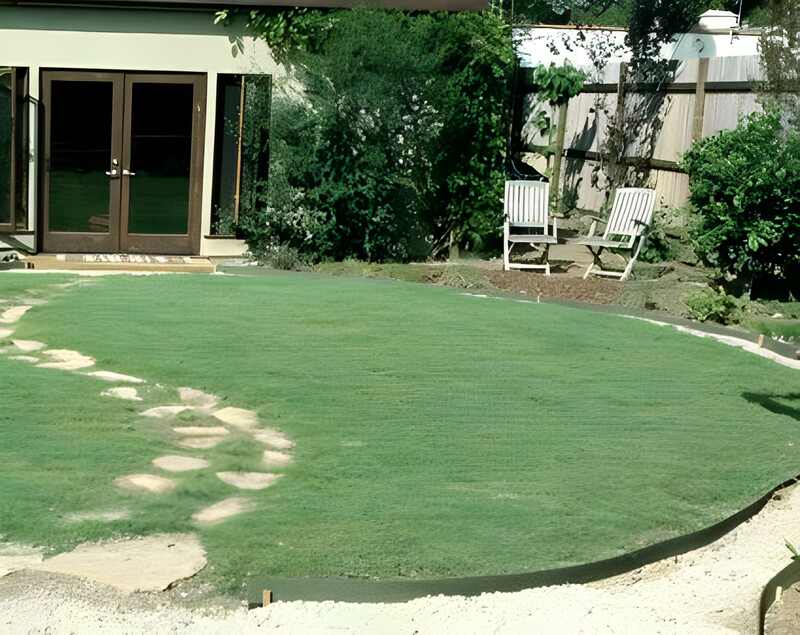
Photo Credit: Susan Harris / Flickr / CC BY 2.0
Buffalograss is a fantastic choice for homeowners in Colorado who want a low-maintenance lawn that can withstand the state’s harsh climate. With infrequent mowing and fertilization requirements, it’s an excellent choice for those who wish to spend less time tending to their yard. Buffalograss has excellent drought tolerance, making it a great choice for those hot and dry summers.
However, its low density can result in weed problems, so staying on top of weed control is important. Additionally, there are better options for high-traffic areas. Overall, if you’re looking for a low-maintenance, drought-tolerant lawn, buffalograss could be an excellent choice.
Classification: Warm-season grass
Spreads by: Stolons
Shade tolerance: Low
Drought tolerance: High
Foot traffic tolerance: Low
Maintenance needs: Low fertilizer and mowing needs. Requires weed control.
Mowing height: Set the mowing height between 2 and 3 inches.
Potential for disease: Good tolerance against diseases and insects.
Soil pH: 6.5-7.5
Soil type: Native clay soils, not sandy soils.
Other notes: While its tolerance for harsh conditions is impressive, buffalograss struggles with thatch buildup and has poor shade tolerance, so there may be better choices for areas with many trees or shaded spots.
FAQ About Colorado Grass Seeds
Kentucky bluegrass is a versatile option suitable for various situations and applications. In Colorado, it is the most commonly used grass type for lawns, and local growers produce top-quality bluegrass sod.
Fine fescues are known for their excellent cold tolerance. Still, among the cool-season grasses commonly used in northern lawns, Kentucky bluegrass is the most cold-hardy and can withstand extreme winter temperatures.
With its fine texture, shade tolerance, and low upkeep needs, fine fescue is a desirable choice for homeowners and landscapers as it is considered one of the most effortless cool-season grasses to maintain.
Choose Plant and Grass Varieties for Your Colorado Landscape
While all of the grass varieties described in this article can endure Colorado’s hot summers and cold winters, each type possesses distinct characteristics and maintenance requirements. Consequently, choosing the appropriate grass for your lawn is crucial.
It involves considering available space, intended use, and your willingness to perform upkeep to ensure a healthy lawn.
It’s worth noting that grass is only one component of a stunning landscape. Colorado offers many options for low-maintenance landscaping and native plants.
Need help maintaining your outdoor space? Hire a local lawn care expert near you. We have trusted pros in Aurora, Colorado Springs, and many other cities across the state.
Main Photo Credit: University of Colorado Boulder / sk / Flickr / CC BY-ND 2.0